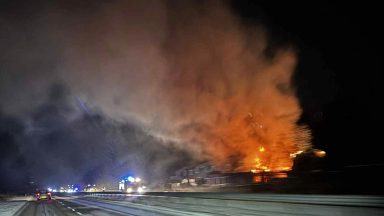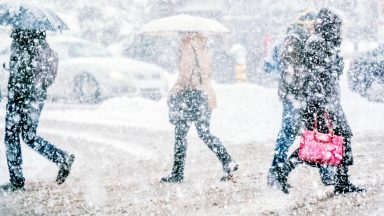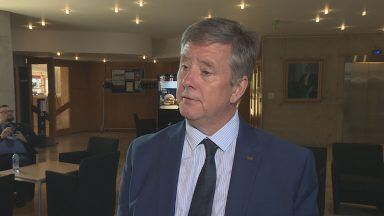The Beast from the East storm which battered Scotland in 2018 has been blamed for missing a key climate target.
Unseasonably cold temperatures and heavy snowfall brought transport to a halt and closed schools in late February and early March two years ago.
Environment secretary Roseanna Cunningham told MSPs an increase in energy usage during the cold snap has contributed to a 1.5% rise in greenhouse gas emissions between 2017 and 2018.
It means the Scottish Government missed its own climate target to reduce emissions by 54% compared to the 1990 baseline, which was put in place through legislation last year.
In statistics published on Tuesday, emissions were found to have reduced by 50%.
The Beast from the East swept through the country in 2018 from Siberia, causing parts of Scotland to come to a standstill as a rare red warning was released by the Met Office.
Parts of the country were as cold as the Arctic Circle, with two inches of snow falling in an hour in some areas, with others dealing with up to 20 inches of snow in certain places.
Speaking at Holyrood on Tuesday, Cunningham said the targets were set to provide “an extremely stretching pathway” to net-zero, which “will inevitably face challenges”.
The minister added: “Today’s statistics do highlight one such setback, with changes to the national energy mix and freezing temperatures from the Beast from the East in the early months of 2018 contributing to a rise in emissions from energy supply and heating used for buildings.”
The statistics show a rise of 800,000 tonnes of carbon dioxide equivalent in the energy supply, a jump of 13.4% between 2017 and 2018.
Cunningham said: “We remain absolutely committed to ending Scotland’s emissions contribution by 2045, with a 75% reduction being achieved by 2030.”
The environment secretary said the figures do not reflect more recent efforts to tackle the climate emergency, including the results of the 2018 climate change plan and new measures announced by the First Minister in 2019 as she declared a “climate emergency”.
The deposit return scheme, an increase in funding for peatland restoration and a funding boost for Energy Efficient Scotland to more than £150m are among the actions taken since 2018, Cunningham said.
The Climate Change (Emissions Reduction Targets) (Scotland) Act 2019 set a target of achieving net-zero emissions by 2045, with the Scottish Government to publish annual updates on progress.
It set a target on 2018, which had passed by the time MSPs voted on the Bill in September 2019.
The target for 2020 is currently set at 56%.
Conservative environment spokeswoman Annie Wells questioned Cunningham’s explanation that cold weather was to blame, adding there needs to be a “clear road map” to net-zero.
Claudia Beamish, the Labour environment spokeswoman, described missing the target as “disappointing”, saying there should be “robust and urgent action now” to meet the 2030 target of 75%.
Liam McArthur, the Lib Dem energy spokesman, described the missed target as “damaging”.
Mark Ruskell, the Scottish Greens MSP, said the Scottish Government “failed to have any positive impact whatsoever on transport emissions”.
These dropped by 1.1% between 2017 and 2018.
Follow STV News on WhatsApp
Scan the QR code on your mobile device for all the latest news from around the country



























